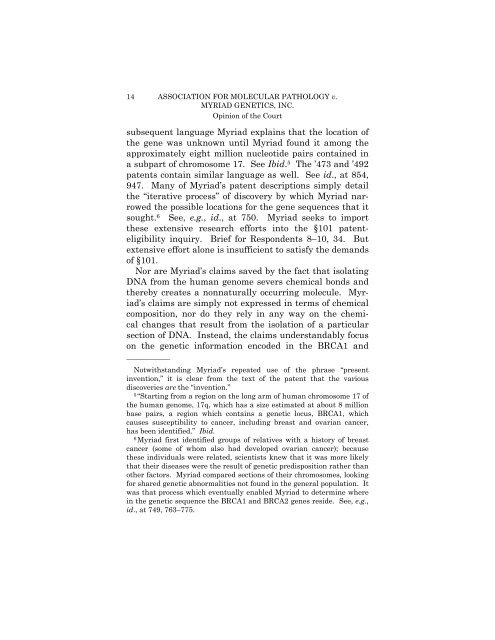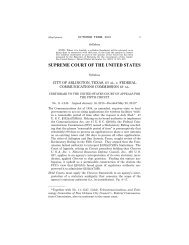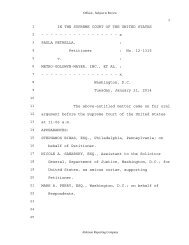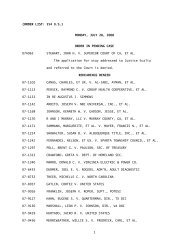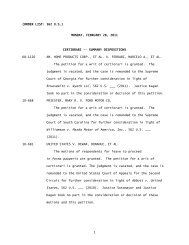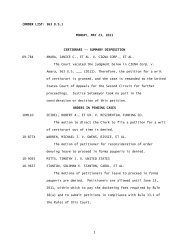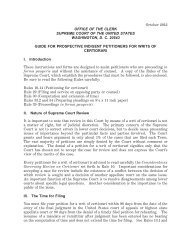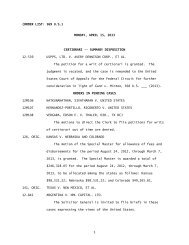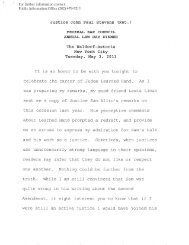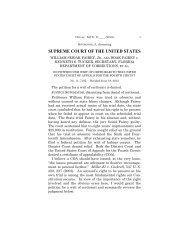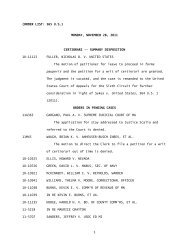12-398 Association for Molecular Pathology v. Myriad Genetics, Inc ...
12-398 Association for Molecular Pathology v. Myriad Genetics, Inc ...
12-398 Association for Molecular Pathology v. Myriad Genetics, Inc ...
You also want an ePaper? Increase the reach of your titles
YUMPU automatically turns print PDFs into web optimized ePapers that Google loves.
14 ASSOCIATION FOR MOLECULAR PATHOLOGY v.<br />
MYRIAD GENETICS, INC.<br />
Opinion of the Court<br />
subsequent language <strong>Myriad</strong> explains that the location of<br />
the gene was unknown until <strong>Myriad</strong> found it among the<br />
approximately eight million nucleotide pairs contained in<br />
a subpart of chromosome 17. See Ibid. 5 The ’473 and ’492<br />
patents contain similar language as well. See id., at 854,<br />
947. Many of <strong>Myriad</strong>’s patent descriptions simply detail<br />
the “iterative process” of discovery by which <strong>Myriad</strong> narrowed<br />
the possible locations <strong>for</strong> the gene sequences that it<br />
sought. 6 See, e.g., id., at 750. <strong>Myriad</strong> seeks to import<br />
these extensive research ef<strong>for</strong>ts into the §101 patenteligibility<br />
inquiry. Brief <strong>for</strong> Respondents 8–10, 34. But<br />
extensive ef<strong>for</strong>t alone is insufficient to satisfy the demands<br />
of §101.<br />
Nor are <strong>Myriad</strong>’s claims saved by the fact that isolating<br />
DNA from the human genome severs chemical bonds and<br />
thereby creates a nonnaturally occurring molecule. <strong>Myriad</strong>’s<br />
claims are simply not expressed in terms of chemical<br />
composition, nor do they rely in any way on the chemical<br />
changes that result from the isolation of a particular<br />
section of DNA. Instead, the claims understandably focus<br />
on the genetic in<strong>for</strong>mation encoded in the BRCA1 and<br />
——————<br />
Notwithstanding <strong>Myriad</strong>’s repeated use of the phrase “present<br />
invention,” it is clear from the text of the patent that the various<br />
discoveries are the “invention.”<br />
5 “Starting from a region on the long arm of human chromosome 17 of<br />
the human genome, 17q, which has a size estimated at about 8 million<br />
base pairs, a region which contains a genetic locus, BRCA1, which<br />
causes susceptibility to cancer, including breast and ovarian cancer,<br />
has been identified.” Ibid.<br />
6 <strong>Myriad</strong> first identified groups of relatives with a history of breast<br />
cancer (some of whom also had developed ovarian cancer); because<br />
these individuals were related, scientists knew that it was more likely<br />
that their diseases were the result of genetic predisposition rather than<br />
other factors. <strong>Myriad</strong> compared sections of their chromosomes, looking<br />
<strong>for</strong> shared genetic abnormalities not found in the general population. It<br />
was that process which eventually enabled <strong>Myriad</strong> to determine where<br />
in the genetic sequence the BRCA1 and BRCA2 genes reside. See, e.g.,<br />
id., at 749, 763–775.


